 |
The epic "David of Sassoon" was presented in the format of a graphic novel
The iconography of the epic Davit of Sassoon was published, based on the Tumanyan elaboration of the epic. It is presented for the first time in graphic novel format. The publisher is "Number 405" company, the artist is Tigran Mangasaryan, the producer is Narek Van Ashughattoyan. In "Artfocus", the director of "Number 405" company, presenter Gohar Gasparyan and the author of the illustration text, literary critic Ani Yeghiazaryan presented the content of the comic and the history of its creation. The program was hosted by Anahit Margaryan.
|
 |
What is "The Little Prince" Really About?
Antoine de Saint-Exupéry's "The Little Prince" is interpreted in various readings as a children's tale about the relationship between adults and children, an allegory of a love story, an anti-fascist ideology, even an existential fable about loneliness. What is "The Little Prince" really about? Literary experts Hayk Hambardzumyan and Arkmenik Nikoghosyan discussed the layers of "Little Prince" in the "Parallel Readings" program.
|
 |
From Retreat democracy to demarcation
What is the basis of the illegality of the process carried out under the name of demarcation in the territory of Tavush region? Why does the RA government violate the RA Constitution and accuse those fighting against it of "playing politics"? What legal ways are there to implement the process of reproduction of the Armenia-Azerbaijan interstate border? Anna Sargsyan talked with the member of the Supreme Spiritual Council of the Mother See, doctor of legal sciences, professor Gevorg Danielyan.
|
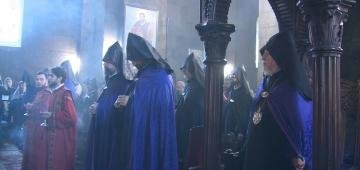 |
On the Feast of Ascension a Republican Prayer was fulfilled in the St. Gayane monastery
On May 9, the Holy Armenian Apostolic Church celebrated the Ascension of our Lord Jesus Christ. That day is also commemorated as the historic day of the transfer of the All-Armenian Catholicosate from the city of Sis to Holy Etchmiadzin in 1441. The Feast is portable. This year it coincided with the Victory and Peace Day. The Catholicos of All Armenians Karekin II, on the occasion of Victory and Peace Day, conveyed a message at the St. Gayane Monastery.
|
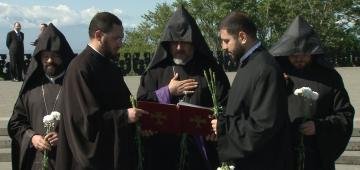 |
On May 9, the Brotherhood of the Mother See visited "Victory" Park
On May 9, on the occasion of the Victory and Peace Day, the Brotherhood of the Mother See of Holy Etchmiadzin and the members of the spiritual leadership of the RA Armed Forces visited the "Victory" park memorial complex, where after placing flowers at the monument of the Unknown Soldier, they paid their respects to the indelible memory of those who died in the Great Patriotic War and Artsakh battles.
|
 |
New strategy of education and science. part 157
How has life changed in border communities after the war?
At the scientific conference held at YSU, it was discussed how the life of the residents of border communities and communities that became border after the war has changed, especially in terms of culture. Another study referred to the change of the monumental cultural landscape in the border settlements after the war. Hovhannes Yeranyan discussed with Haykuhi Muradyan, lecturer of the chair of cultural studies of YSU history faculty, the issues of preservation of historical monuments and cultural monuments of border settlements.
|
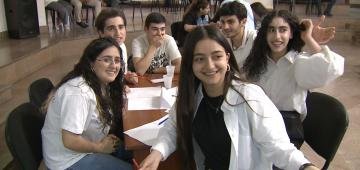 |
The winner of the intellectual festival entitled "Nation, Army, Church" is the "Gandzasar" team.
An intellectual festival titled "Nation, Army, Church" was held in the Holy Trinity Church, in which the youth of the Araratian Pontifical Diocese participated. 11 teams participated in the three-round match. The victory cup went to the "Gandzasar" team of the Holy Mother of God Church of Nork-Marash. This is the second festival held this year, the first one was held during the Saint Sargis feast under the title "The power of love is invincible".
|
 |
Hasmik Movsisyan's "250" movie
The film about children drivers from Artsakh received 17 awards
3 years ago, the press wrote about the feat of fourteen-year-old Vahe and eleven-year-old Ashot from Artsakh, who sat behind the wheel of their father's cars during the 44-day war, traveled 250 km and saved not only their relatives, but also neighbors and compatriots they met on the road. Film director Hasmik Movsisyan made a short feature film based on this story. The film "250 km" was screened at 23 film festivals around the world and received 17 awards. Hasmik Movsisyan, director, screenwriter and producer of the film, is the guest of Anahit Margaryan in "Artfocus".
|
 |
Hovhannes Shiraz, 110th anniversary, Part 2
The influence of Hovhannes Shiraz's poetry was very great in Armenia and the Diaspora. His poems dedicated to the Armenian Genocide and Western Armenia are still the focus of readers' attention. How was the poet able to address these topics that were forbidden in the Soviet period and how relevant are these works today? These questions are discussed by literary critics Hayk Hambardzumyan, Arkmenik Nikoghosyan and Samvel Muradyan in the "Parallel Readings" program.
|
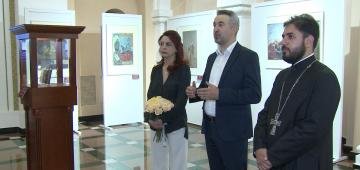 |
An exhibition dedicated to the 130th anniversary of the Persian-Armenian artist Andre Sevrugyan was opened
The exhibition titled "Poetry of Images" opened in cooperation with the Museums of Mashtots Matenadaran and Mother See of Holy Etchmiadzin is dedicated to the 130th anniversary of the Persian-Armenian artist Andre Sevrugyan. Some of the famous artist's works are stored in the vaults of both institutions. Combined in one exhibition, presented for the first time, some works have never been shown before.
|
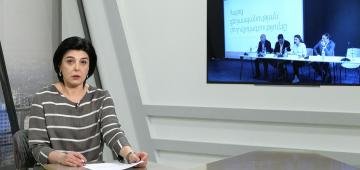 |
How many millions would we be today if Turkey had not committed the Armenian Genocide?
During the 70 years of Soviet Armenia, the population of Armenia increased fivefold. The population of Western Armenia before the genocide was 2.5 million, and if the genocide had not happened, then the population of Armenia could be about 13-15 million now.
Mikael Malkhasyan, candidate of historical sciences, specialist in historical demography, believes that the influence of the genocide still exists today, it is not just an event that happened 100 years ago, which affects 1.5 million people. The result of the genocide is that we have little opportunities today.
He claims that the bait of a recent public discussion about the number of Armenians subjected to genocide is a dangerous political narrative that can turn into a simplification and dissolution of the subject of international recognition of the Armenian Genocide, fair and legitimate claims.
|
 |
Harutyun Mkrtchyan after the 44-day war
A wartime contract soldier has a mission
Harutyun Mkrtchyan, a resident of Meghrashat village in Shirak region, lost his leg, his health and his childhood friend during the 44-day war. Harutyun undergoes one operation after another, but he hopes that everything will be fine, that God will protect him, because he still has work to do.
|
